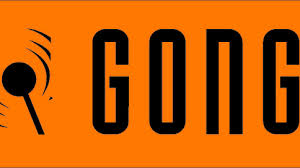
On Monday, Gong requested the Agency for Electronic Media (AEM) to initiate a process to determine the actual ownership of Z1 Television, emphasizing that the Law on Electronic Media prohibits concealed ownership of media service providers.
In September, Gong reached out to three institutions responsible for media oversight — the Ministry of Culture and Media, the Agency for Electronic Media (AEM), and the Parliamentary Committee for Information, Computerization, and Media — following repeated claims by Ivan Penava, the Vice President of the Parliament and leader of the Homeland Movement, during internal party disputes, that the real owner of Z1 Television is Mario Radić.
Gong pointed out that Pevex, a company owned by Pavle Vujnovac and Mario Radić, was previously the formal owner of Z1 Television, but in late 2020, ownership was transferred to Kodiak Trade, a company owned by Osijek-based restaurateur Hrvoje Milas, who, according to media reports, is also Radić’s godfather.
“The internal party conflict between Penava and Radić appears to have inadvertently confirmed what journalists have warned about for years—that Radić is indeed connected to the management of Z1 Television. This was also confirmed by ‘Bujica’ host Velimir Bujanec, who, during a podcast appearance defending Mario Radić, stated, ‘Radić has nothing to do with Bujica, I am external production,’ which actually implies that Z1 Television is under Radić’s control,” Gong stated.
Gong highlighted that no response was ever received from the Parliamentary Committee for Information, Computerization, and Media, despite the issue of media ownership transparency having already been raised during their session at the end of 2023.
In its response, the Ministry of Culture wrote about the register of beneficial owners, the necessity to report any ownership changes to the Electronic Media Council to assess the impact on media pluralism, and the prohibition of concealing ownership structures.
Gong concluded that they have not received a concrete answer from AEM regarding the ownership of Z1. In their clarification, AEM responded that proving the concealment of ownership of media service providers is not possible without access to documents or agreements on concealed arrangements.
To access such documents or evidence of hidden or secret transactions, AEM stated that it would be necessary to examine business records and other documentation, potentially seize or copy them, conduct unannounced searches of business premises, including transportation vehicles and other property, and obtain statements from representatives or responsible individuals, as well as take other necessary actions.
“Thus, the Agency is aware that there are ways to determine the existence of concealed ownership if there is the will to do so,” Gong emphasized.
They added that AEM claimed it does not have the authority to carry out such actions and that “concealed ownership, if it exists, is always secret, and if its participants wanted to be transparent, they would have made their dealings public.”
Gong concluded that, according to AEM’s logic, media ownership transparency “rests solely on the goodwill of formal owners, who, as they themselves admit, if they don’t want to be transparent, won’t be.”
“Instead of attempting to resolve this complex issue, which affects the quality and independence of journalism in Croatia, the regulator is washing its hands of responsibility, just as the Ministry of Culture and Media did. Gong demands that AEM take responsibility and initiate the process of determining the true ownership, rather than relying on someone’s word,” Gong concluded.
Author: Hina/M.E. Habek